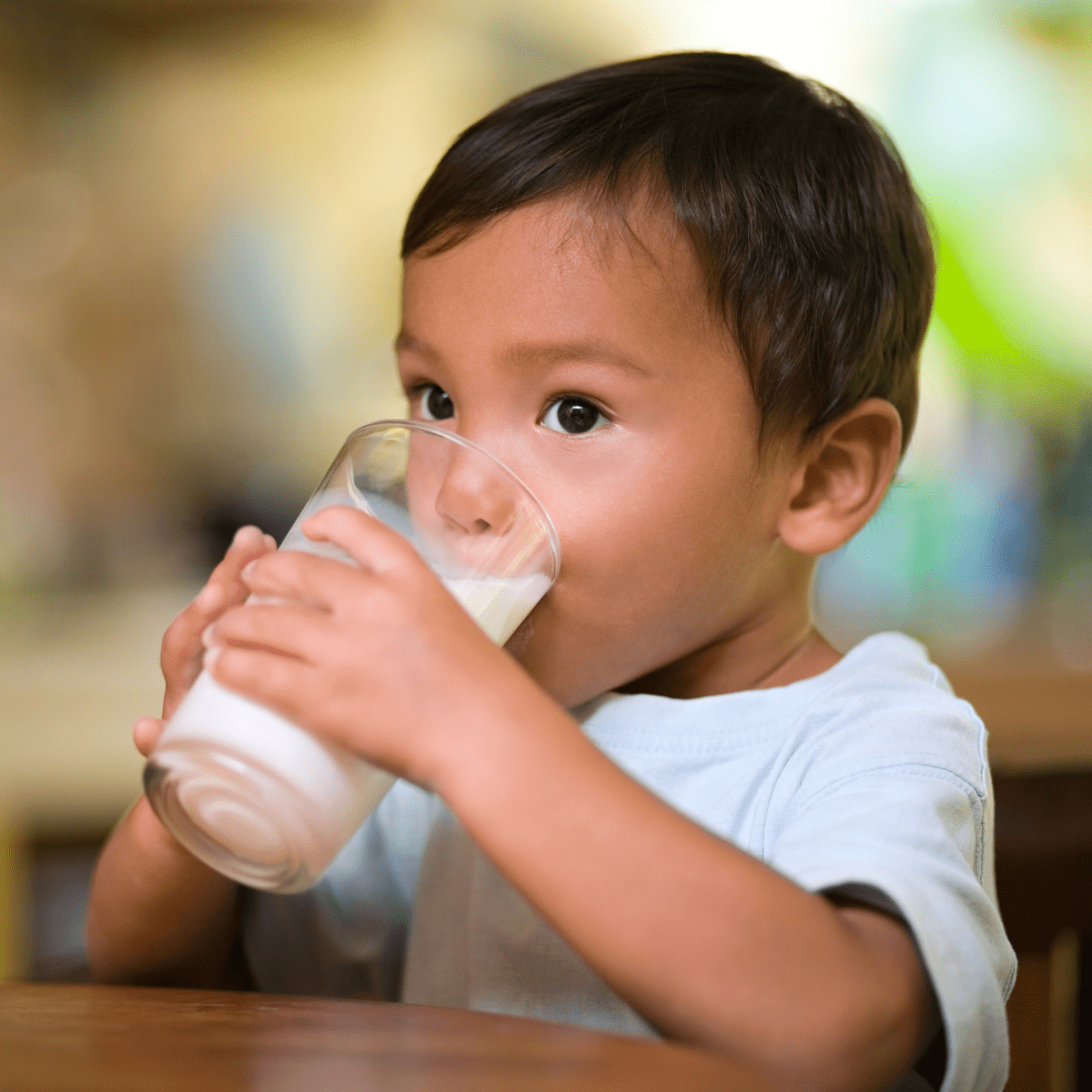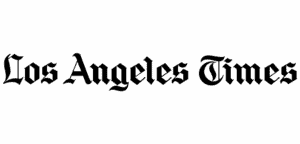Is oat milk healthy?
Dec 14, 2022, Updated Apr 30, 2024
This post contains affiliate links. Please see our disclosure policy.

A few years ago, if you went to Starbucks and tried to order a coconut milk latte, the barista would’ve looked at you like you grew a second head. Some places had soy, and if you were lucky, you might have found one brand of rice or hemp milk kicking around a local health food store. Today, that’s totally changed! Grocery stores and coffee shops are stocked with all kinds of dairy alternatives from newly mainstream options like almond milk to impressively obscure ones like avocado milk. And the milk option it feels like everyone is thinking about right now is oat milk! Well, everyone but me—because I’m stuck thinking about how do you even milk an avocado. 🤔
In this post, we’ll cover the benefits and drawbacks of oat milk. You’ll see how it compares to cow’s milk, and you’ll learn if it’s a good idea to serve oat milk to your babies, toddlers, and kids. I’m also gonna answer the #2 most-asked oat milk question: Is oat milk healthy? (The first being, “Do you have oat milk?”)
Table of Contents
- Oat Milk vs. Cow’s Milk
- Pros and Cons of Oat Milk
- Pro: More Fiber
- Pro: Lower Sodium & Sugar
- Con: Less Vitamin D & Calcium
- Con: More Added Ingredients
- Con: Gluten
- Tip: Check The Label
- Oat Milk for Babies, Toddlers & Children
- So…Is Oat Milk Healthy?
- More Plant-Based Milk Info
- Cow’s Milk FAQ
- Get My Free Healthy Cereal Guide
Oat Milk vs. Cow’s Milk

To determine whether or not oat milk is “healthy,” we need to understand how it breaks down nutritionally. For many parents, it’s also helpful to compare that breakdown to cow’s milk, too, so that’s exactly what I did:
1 Cup of Oat Milk
Calories: 120
Fat: 5g
Sugar: 7g
Added Sugar: 7g
Protein: 3g
1 Cup of Whole Cow’s Milk
Calories: 160
Fat: 8g
Sugar: 11g
Added Sugar: 0g
Protein: 8g
As you can see, whole cow’s milk has 8 grams of protein—which is more than double the protein in oat milk! It always has quite a few more grams of fat, making it a more nutrient-dense option than oat milk. (The same can be said for most other non-dairy milks.)
A little side note: For this comparison, we looked at the nutritional profile of Oatly, but each oat milk brand will be a little different. It’s always a good idea to check the nutrition label of your favorite brand.
Pros and Cons of Oat Milk
Whole cow’s milk is more nutrient-dense than oat milk, but that’s not the only thing that counts. Here are a few of the nutritional pros of oat milk, plus a few more cons to consider.
Pro: More Fiber
Oat milk is made from oats, so it has a few grams of fiber in it whereas cow’s milk has none.
Pro: Lower Sodium & Sugar
Oat milk is often slightly lower in both sodium and sugar than cow’s milk. But it does depend on the brand and product you’re looking at. Most oat milk products do contain added sugar, whereas the sugar in milk is naturally occurring.
Con: Less Vitamin D & Calcium
Oat milk is slightly lower in vitamin D and calcium than cow’s milk.
Con: More Added Ingredients
Oat milk almost always has added ingredients, some of which could be undesirable. It’s a good idea to check the ingredient list before buying, especially if avoiding certain ingredients is important to you.
Con: Gluten
Oats are naturally gluten-free so you may think oat milk is a good gluten-free option. But oats are often processed in a way that makes them unsafe for people with gluten intolerances, allergies, and Celiac disease, so it’s actually not a great allergen-friendly choice for those needing to avoid gluten.
Tip: Check The Label
Not all oat milks are created equal, so it’s a good idea to learn what to seek out and what to avoid when you go grocery shopping. The most important nutrients to look for are the overall calories, protein, and fat provided by the brand of oat milk in question. But I’d also recommend paying attention to the amount of vitamin D, calcium, and added sugar (ideally, babies and toddlers under 2 shouldn’t have any).
Oat Milk for Babies, Toddlers & Children

First things first: you don’t have to give your child any milk. As long as they’re eating a balanced, healthy diet that includes a variety of food—or they’re still on breastmilk or formula—they’re getting all their micro and macronutrients. But, after age 1, there’s nothing wrong with giving your child milk, either! So if you’re considering giving your little one oat milk, here’s what you need to know:
Avoid Oat Milk for Baby (as a beverage)
The AAP recommends that babies only receive breastmilk or formula as a beverage before 1 year of age. Substituting any type of milk, whether it’s cow’s milk or a plant-based milk alternative, isn’t recommended because it may displace important nutrients from their diets. Milk is also too high in protein and certain minerals for a baby’s kidneys to manage, which can lead to some not-so-great health concerns. So even though milk and milk alternatives may seem harmless or close enough to the breastmilk or formula they’re already having, it is best to hold off.
Unless, you are using milk as an ingredient in a recipe. You shouldn’t be putting milk or a milk alternative in their bottle. But it IS okay if you want to add a milk to oatmeal, for example, or make a pasta sauce with milk.
Oat Milk for Toddlers & Kids
After one year of age, the CDC recommends cow’s milk or fortified soy milk (the most nutritionally similar alternative to cow’s milk). These options have the protein, fat, vitamins, and minerals necessary to ensure that children meet their recommended daily allowances (RDAs). Other milk alternatives, including oat milk, lack the nutrition recommended for kids. (Although I personally think there are some other options that are nutritionally comparable, like pea milk.)
So…Is Oat Milk Healthy?
If you’ve been part of the Mama Knows community for a while, you know I like to steer away from labeling foods as good or bad—healthy or unhealthy. All food provides nutrition in different quantities. It’s up to us as parents to make sure we’re giving our kids a good mix of the foods they need to meet their nutritional requirements and the foods they just love and want to eat sometimes.
That being said, some foods are more nutrient-dense than others, meaning they give us a little more of what we need, while other foods give us less. And oat milk is a food that gives us less of what we need.
As you saw above, oat milk is comparable to cow’s milk in certain areas, like calories, but it comes up short in others, like fat and protein. This makes sense because oat milk is essentially oats and water, but there are often other ingredients added to make it more palatable and give it a creamy texture, too. Those ingredients are things like gums, sugar (sometimes), and oils like canola (also called rapeseed) and sunflower oil. The oils are used as emulsifiers and while they are less nutritious than heart-healthy options like avocado and olive oil, they’re not harmful in the quantities found in a cup of oat milk.
When you’re deciding which milk is best for your kids, take all of the above into consideration and consider the nutritional context, too. If your kids are only having a few sips of milk, or you’re fortifying a smoothie or an oatmeal bowl with milk, it might be better to go with one that’s going to give them the most nutrients per bite or sip, and that’s cow’s milk.
And, if you rely on milk to fill in the nutritional gaps in your child’s diet—especially if they’re a picky eater!—I’d recommend cow’s milk over oat milk. But a splash of oat milk in a smoothie, your pancake batter, or your favorite muffin recipe? That’s nothing to stress over!
At the end of the day, oat milk wouldn’t be my alternative milk of choice for a toddler or child because it doesn’t have the same nutritional value as cow’s milk or fortified soy milk. And it can include some hidden grams of sugar and less nutrient-dense oils.
There is one newer oat milk brand on the market that a few people have reached out about- Kiki Milk. It has a comparable nutrition profile to cow’s milk with 5g protein, 6g fat, and 140 cals per cup. It’s a good option- but a pretty expensive one, and also has a bit of added sugar.
Bottom line: there are better milk alternatives out there for kids!
More Plant-Based Milk Info
- Almond Milk: Should my toddler drink it?
- Best Almond Milk for Baby
- Soy Milk for Toddlers: Is it Bad?
Cow’s Milk FAQ
- Milk for Toddlers: Answering All Your Questions on Cow’s Milk, Non-Dairy Alternatives & Hormones
- What to Do if Your Toddler isn’t Drinking Cow’s Milk (Nutrition & Drinking Tips)
Get My Free Healthy Cereal Guide

What goes better with milk than cereal? This free guide includes a list of cereals with less than 6 grams of added sugar per serving. Pair them with whole cow’s milk or fortified soy milk and you’ve got an easy, balanced breakfast you can feel good about!













